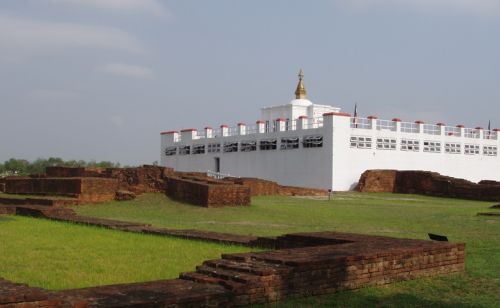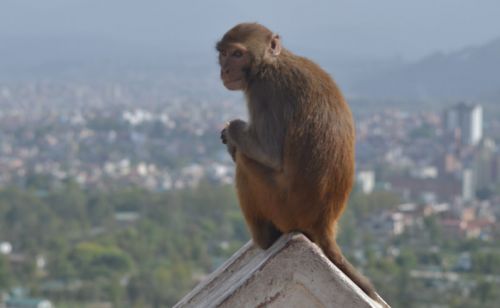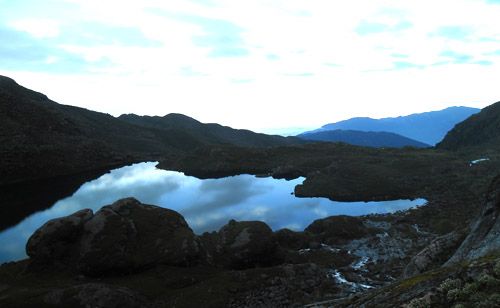Everest Base Camp Trek- 11 Days
Trip cost start from: US$ 1077
Trip Destination:Nepal
Total Duration:11 Days
Difficulty:Strenous
Trekking Days:9
Nature :At guesthouse & hotel
Max. Altitude :5,555 m.
Best Season:Mar - May & Sept - Nov.
Show AllGlimpse of this trip:
- Amazing view of the Mount Everest from Kalpathar
- Charming view of the Mount Amadablam
- Buddhist cultural & lifestyle
- Travel along with the Dudhkoshi River
- Different kind of animals with rear musk dear & red panda
Everest Base Camp trek is one of the most beautiful treks in the world. Which offer us worm welcome with snow covered mountains where you can have wonderful experience with Nepalese cultures, their lifestyle and hospitality. During your trip you will have many more opportunities to observe scenic beauty of Mount Everest, Mt. Amadablam, Mt. Thamserku, included many others.
The Everest Base Camp trek begins soon after flight from Kathmandu to Lukla (elevation 2800 m). Our journey starts from Lukla to Everest Base Camp through the many Sherpa villages along with Namche Bazaar. Kalapatter (5500 m) is the highest elevation of our trip from where typical views of Everest and its surrounding peaks can be observe. In other hand beautiful and large Khumbu glacier also attracts our eyes.
Detail Itinerary
Day 01Arrival in Kathmandu airport and transfer to hotel along with trek preparation.
Day 02Flight from Kathmandu to Lukla (2840 m) & trek to Phakding (2652 m) around 3/ 4 hrs trek. Overnight at guesthouse.
Day 03Trek from Phakding to Namche Bazaar (3440 m) around 5/ 6 hrs trek. Overnight at guesthouse.
Day 04Trek from Namche Bazaar to Tyangboche (3860 m) around 5/ 6 hrs trek. Overnight at guesthouse.
Day 05Trek from Tyangboche to Dingboche (4410 m) around 5/ 6 hrs trek. Overnight at guesthouse.
Day 06Trek from Dingboche to Lobuche (4910 m) about 5/ 6 hrs trek. Overnight at guesthouse.
Day 07Trek from Lobuche to Gorakshep (5180 m)-Everest base camp (5364 m)- Gorakshep about 6/ 7 hrs trek. Overnight at guesthouse.
Day 08Early morning hike up to Kalapatthar (5555 m) & descend to Gorkashep then trek to Pheriche (4270 m) about 6/ 7 hrs trek. Overnight at guesthouse.
Day 09Trek from Pheriche to Namche Bazar (3440 m) about 6/ 7 hrs trek. Overnight at guesthouse.
Day 10Trek from Namche Bazaar to Lukla (2840 m) about 6/ 7 hrs trek. Overnight at guesthouse.
Day 11Flight from Lukla to Kathmandu and free day in Kathmandu. Overnight at hotel.
Cost Include
- All additional government tax.
- All necessary trekking permits.
- Airport picks and drops by private vehicle.
- 2 nights hotel in Kathmandu with B&B base.
- Accommodation in lodge/ guesthouse during trekking.
- Domestic airfare to/ from Lukla and Kathmandu, including airport tax.
- Meal on full menu (breakfast, lunch and dinner) with tea and coffee during the trek.
- Accommodation, salary, travels insurance, transportation of Nepali trekking staff.
- An experienced government licensed trekking guide and porter (1 porter for 2 trekkers).
Cost Exclude
- International air fare.
- Lunch and dinner in Kathmandu.
- Your travel insurance (Compulsory).
- Tips to guide and porter and all kind of Drinks.
- Nepal entry visa fee (U$ 40 for 30 days from date of issue).
- Bar bills, telephone bills and other personal expenses (shopping, laundry & shower).
- All expenses due to sudden events e.g. flight cancellation, personal illness, strike etc.
Approximately Individual Expenditure on the Spot
- Lunch or dinner in Kathmandu (10- 15 US$) per item
- Mineral water per bottle (1-3 US$)
- Hot shower (1-3 US$)
Note: The others expenses are depend on you (shopping, hard drinks, etc.) and situation (flight cancellation, rescue, etc.). If you depart earlier than itinerary program your payment will not be refunded and early arrival expenditure also will not be covered by your trip cost.
Trip Info
Accommodation: We provide wide range of accommodation services for our clients as per there request from star hotel to normal guesthouse in main city areas where available, while the price of the trip might alter on that basis. Everest region is popular destination for wide range of trekking route and packages, good quality of accommodation options are available there.
Food/ Meals: Cities areas in Nepal offer excellent and variety of food and cuisines as it has many hotels and restaurants. National/ international food, local food, fast food, dessert items, snacks etc. are easily available in cities areas like; Kathmandu, Pokhara, Lumbin,... While in case of remote areas one can enjoy local food prepared by the local people. Everest region is famous for trekking and mountaineering so there we can get good quality of food but option and variety might be less in compared to main cities area.
Drinking Water: We highly advise to minimize use of plastic during the trek. Please always remember that there is no any plastic recycle facilities up in the Mountains. In this regard we highly recommend you to use boiled water for drinking or use water purification tablets instead of buying water in plastic bottles. Your guide will suggest you the best and most ecological friendly way for drinking water during your trek depending on trekking trail. We advise to have your own water bottle with you for the whole trek which you can refill whenever you need.
Acclimatization: It is very important for the trekking above 2500 m. Our trekking schedules have been carefully designed to maximize your ability to acclimatize safely. We ascend slowly and ensure an adequate number of rest days. However, it is still possible for mountain sickness and your guide will be watching for symptoms with an experienced eye throughout the trip. These symptoms are commonly headache, nausea, vomiting, tiredness, and feeling difficult to breathing. If you or any of the group members display any of these symptoms he will be able to provide informed advice and ensure a proper action. Your guide will advise you more thoroughly regarding the altitude and most of the problems starting on trial.
Best Season: As what one can see highly depend upon the seasonal condition, it is always best to travel on the best season for the corresponding trek. It is not that on season other than the best one, the trek gets worse, but one can fully take advantage of the trek when done in best season. The best season for trek in Nepal is Mar-May (spring) and Sep-Nov (autumn); though trek can be do throughout the year.
Expert Team: Working your way through dangerous mountainous route can be very challenging and adventure. One can encounter less stamina, high altitude, weather condition, steeply and slippery path way while travelling depending upon the route one choose. So leading the trip despite of all the challenges requires experienced and expert team who are directly under you care. They are properly trained and government certified individual who are very capable and knowledgeable to work out through extreme condition and lead you safely. All of our staff is provided with insurance, medical services and equipment as their safety is something we do not take lightly.
Packing Ideas: We advise that carrying appropriate and proper equipment is better than carrying excessive quantity of equipment. So one should only carry appropriate and only absolute necessary equipment with self; warm clothes, trouser, t-shirts, hiking boots, sunglasses, sun cream, knife, walking stick, backpack, headlight, sleeping bags are among the essential stuff one requires. Equipment we provide are limited so, one should manage required equipment by self or it can be bought in any appropriate places.
Safety and Security: Safety and security of traveller and team staff is matter of great concern to us. Selection of proper route, highly trained professional team and equipment required is done with great care and knowledge. We have proper remedial services during the trek with professional staffs; first aid kit, oxygen bag and helicopter service for emergency rescue whenever trekkers get physical loss or altitude sickness.
Experience and Fitness: Though high level of fitness and previous experience is not needed for trekking in this reason but food stamina, workout and running and walking habit helps to higher extent. Walking through rocky steeply path way can be challenging but with appropriate rest and walking habit, one can complete their journey with no regret left behind.
Equipment List
| Trekking Equipments List
Trekking is simply walking in the hills or the mountains, be it for a day or weeks or more. Certain basic trekking equipment is essential while you're trekking to any parts of the trekking destinations in Nepal. The items may differ from the area to area and on season to season. The following are the list of the equipment that we suggest you for your trekking in Nepal Himalaya. Clothing:
Equipment's and Accessories:
Medical:
Details of Trekking Equipment's:
|
Trip Note
Kathmandu-Lukla-Kathmandu flight may be delay by few hours or even cancelled due to bad weather condition. So, you should be prepared for such flight delays or cancellations. But we will do our best to avoid such conditions. In case of flight cancellation, we will try to get you on the flight for the next day. Getting early flight for the next day may not be possible during the high season so, we can arrange flight by helicopter as well but it will cost a bit higher. If we have a group of 4 or 5 people, we can charter helicopter. It will be advisable to have extra days in Kathmandu before and after the trekking. We can arrange you day tour, in Kathmandu valley with extra cost if the extra days are not used for the flight conditions to Lukla and back. If the flight is delayed and cancelled for several days which could disturb your onward journey, you are free to choose trekking in Annapurna, Langtang and other regions and we will arrange the alternative trek for you as soon as possible.
The itinerary given above is just for guidance not the strict rule so it’s possible to customize according to your need.
Enquiry
Useful Info
related Trips
- Everest Base Camp Trek- 13 Days
- Jiri To Everest Base Camp Trek- 22 Days
- Sherpa Culture Trek- 15 Days
- Gokyo Lake Trek- 12 Days
- Phaplu To Everest Base Camp Trek- 17 Days
- Gokyo Lake-Chola Pass-Everest Base Camp Trek- 15 Days
- Renjo Passs Gokyo Lake Trek- 12 Days
- Everest Panorama Trek- 11 Days
- Everest Three High Passes Trek- 18 Days
YOU MAY LIKE THIS

Helambu Trek- 8 Days
8 Days

Pokhara Tour
05 Days

Kathmandu Valley Tour
04 Days

Kathmandu Chitwan Tour
05 Days

Kathmandu Lumbini Tour
07 Days

Ghale Gaun Trek
10 Days

Around the Kathmandu valley Trek
06 Days

Upper Dolpo Trek
28 Days

Everest Base Camp Trek- 11 Days
11 Days

Sherpa Culture Trek- 15 Days
15 Days

Poon Hill Trek- 6 Days
6 Days
.jpg)











